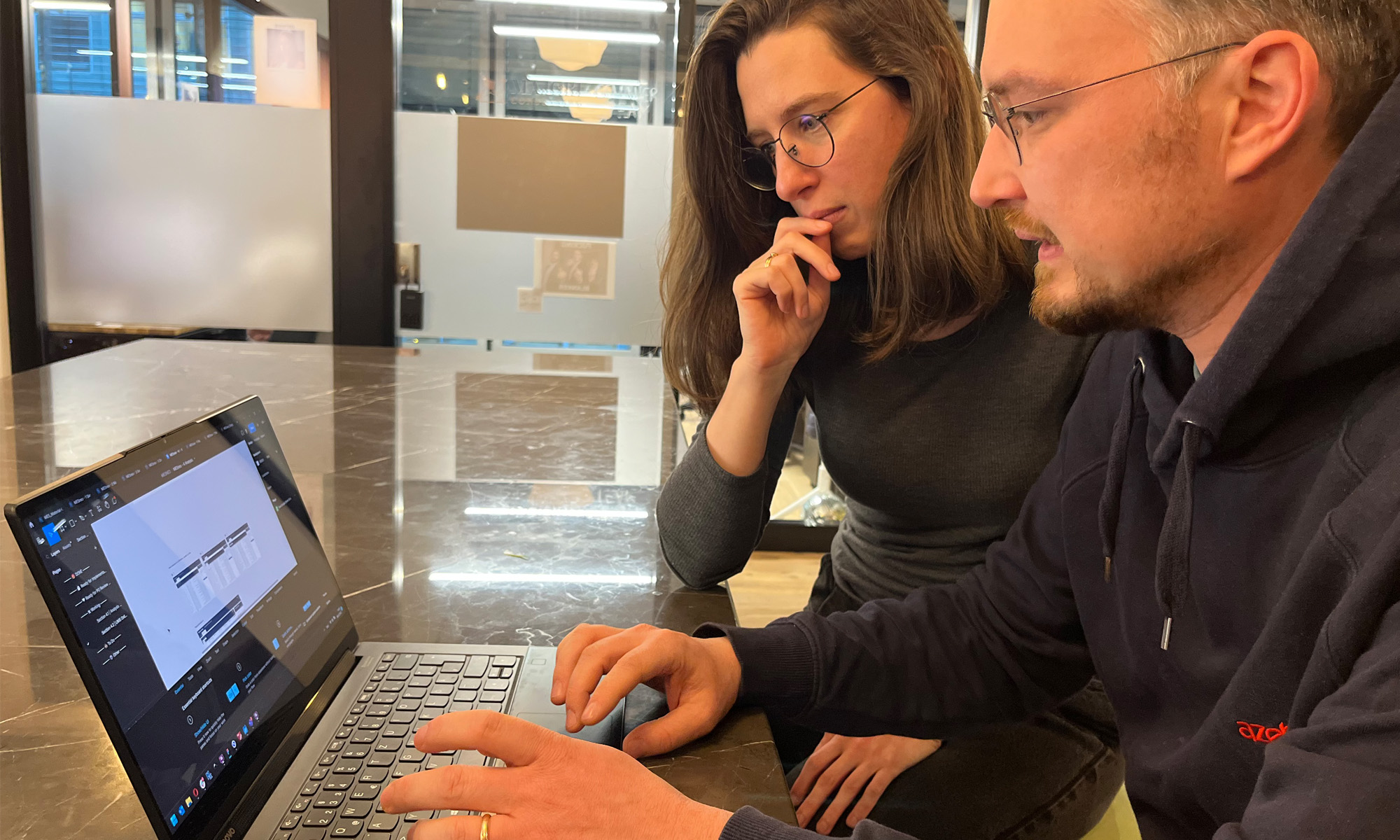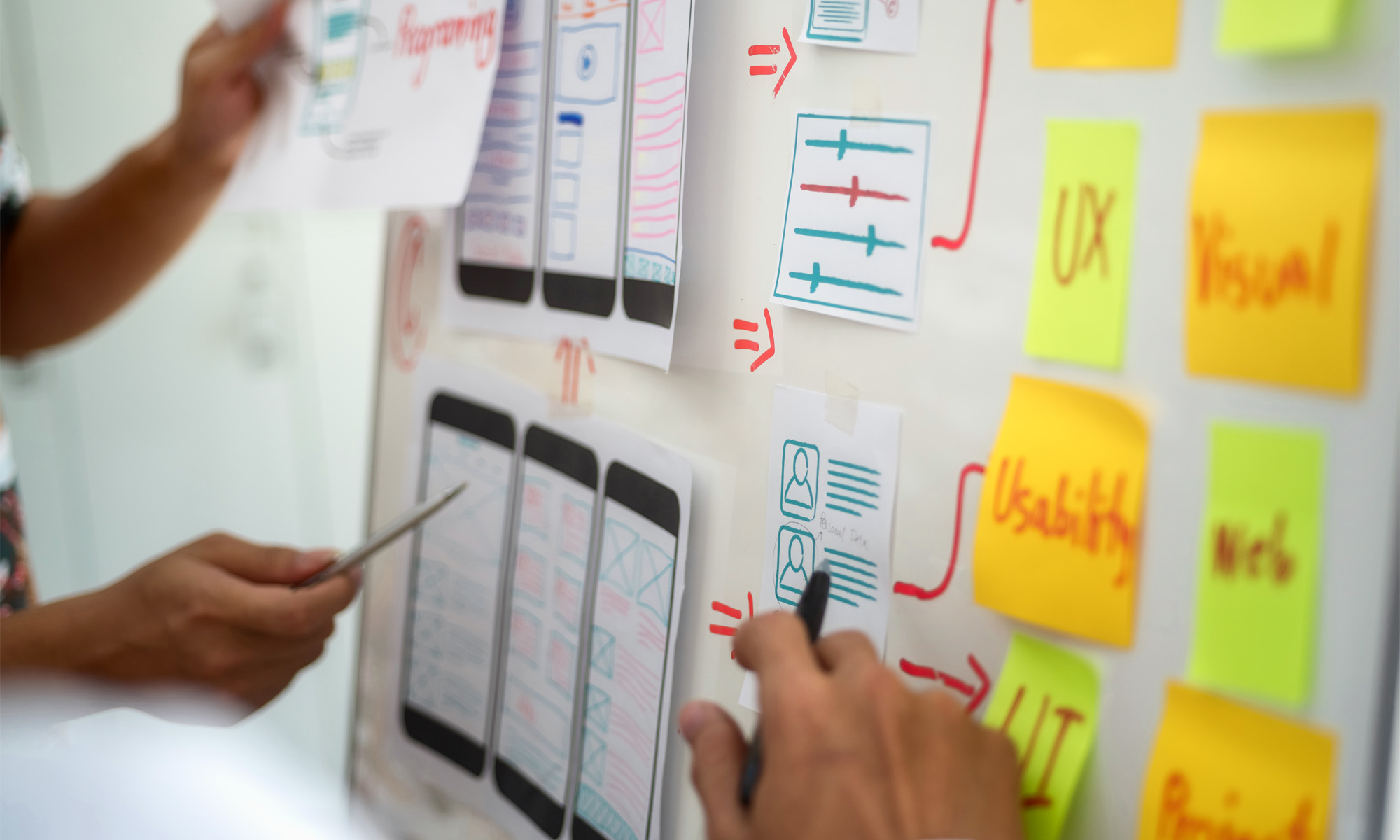Let's be honest: Who hasn't been annoyed by unmanageable websites? Who ended up helplessly searching for answers in an app's community support forum and realized everyone else is likewise clueless? We constantly encounter examples of poor User Experience (UX) design, although it's no secret that it plays a crucial role in developing digital products.
Done well, UX design is practically invisible to users. Quite the opposite is the case when it is executed poorly: Then it literally stares in the face. Sometimes, UX design is so weak that it's counterproductive, and users automatically wonder, “What the heck was the designer thinking when making that design decision?"
We asked our UX team - Thomas, UX Lead, Yael, and Taneem, both UX Designers - what they do to ensure we never lose sight of our users.
Hey Taneem, Thomas, and Yael, nice to have you today.
What kind of tasks do you usually deal with? What are your responsibilities?
Taneem: We are responsible for the interaction concept of our software. This includes understanding and documenting exactly why and how users would work with the software. Based on this, we design the software interface in a systematic approach so that every aspect of the software can be altered and evolved over the years. The design drafts are then revised together with our project managers and developers. At the same time, we constantly verify that our considerations are correct in tests with future users.
Okay, and what do you enjoy most about it?
Thomas: For industrial software, I enjoy discovering how workers on the shop floor or in administration use their outdated software in creative, unconventional ways to get their work done. Because the software can't do what they need, they adapt the functions to their requirements and use them in completely other ways than originally intended. That's very different and much more distinct than user behavior on commercial websites.
Yael: When it comes to industrial B2B software, development has traditionally been led solely by engineers, focusing on ensuring that the software offers many functions and features rather than ease of use. And in that sense, we're working in an evolving space where there's still a lot to explore. I also like that our mission is to make the lives of those who use our software more effortless, unlike B2B apps and websites that usually try to make money off the user (or his/her data).
Taneem: UX is a mix of technology, psychology, and design. That's what makes it so fascinating for me.
In your mind, why is UX design so important?
Yael: On the one hand, you can have a beautifully made website (or app or any product), but if it doesn't satisfy a need, no one will use it. On the other hand, you can have a very sophisticated website with lots of features and functionality, but it can be so poorly designed that no one or only a small handful of users will use it. UX is the bridge between these two ends, bringing utility and usability together.

Thomas: I entirely agree with Yael on that. UX is the actual concept of a software. Developing a software without a concept is a guarantee for failure. UX answers the questions, "What is the purpose?" and "How can this purpose be fulfilled?" These two questions are as important as they are complex.
Taneem: Yes, that's absolutely true. I also think that we UX designers can help make the user feel comfortable. Using a product, it shouldn't be a test. Instead, it should make users' lives easier without them having to think too much about what they're actually doing.
So what does "good UX design" look like to you personally?
Taneem: As I said before, good UX design for me means that you can use it naturally. It should be simple, straightforward and a breeze to use.
Yael: Yes, good UX design creates a balance of the right features, ease and effortless operation.
Thomas: The quality of software design can be measured quite simply by user behavior, i.e., by the increase in productivity and a decrease in time spent on the respective tasks. For me, however, another aspect of our work is crucial: A stable and sustainable design system. Similar to our developer colleagues, all design operations must be coordinated and organized so that every aspect of the design can be altered in the future without having to rebuild the entire software. Every interface item, typeface or function must be part of a giant bespoke construction kit. Maintaining the integrity of this kit and its workflows is at the core of good UX design.
Taneem, Yael, and Thomas, thank you so much for your thouhgts!










